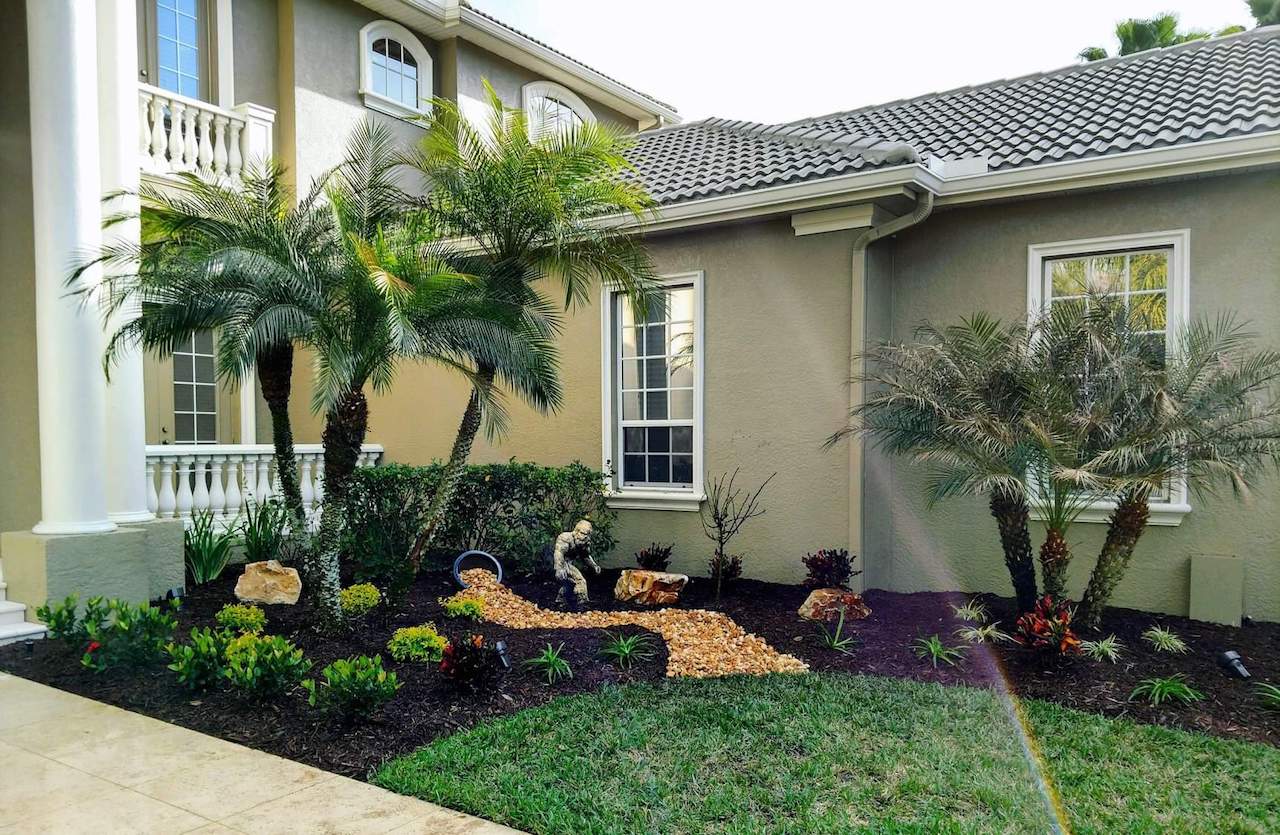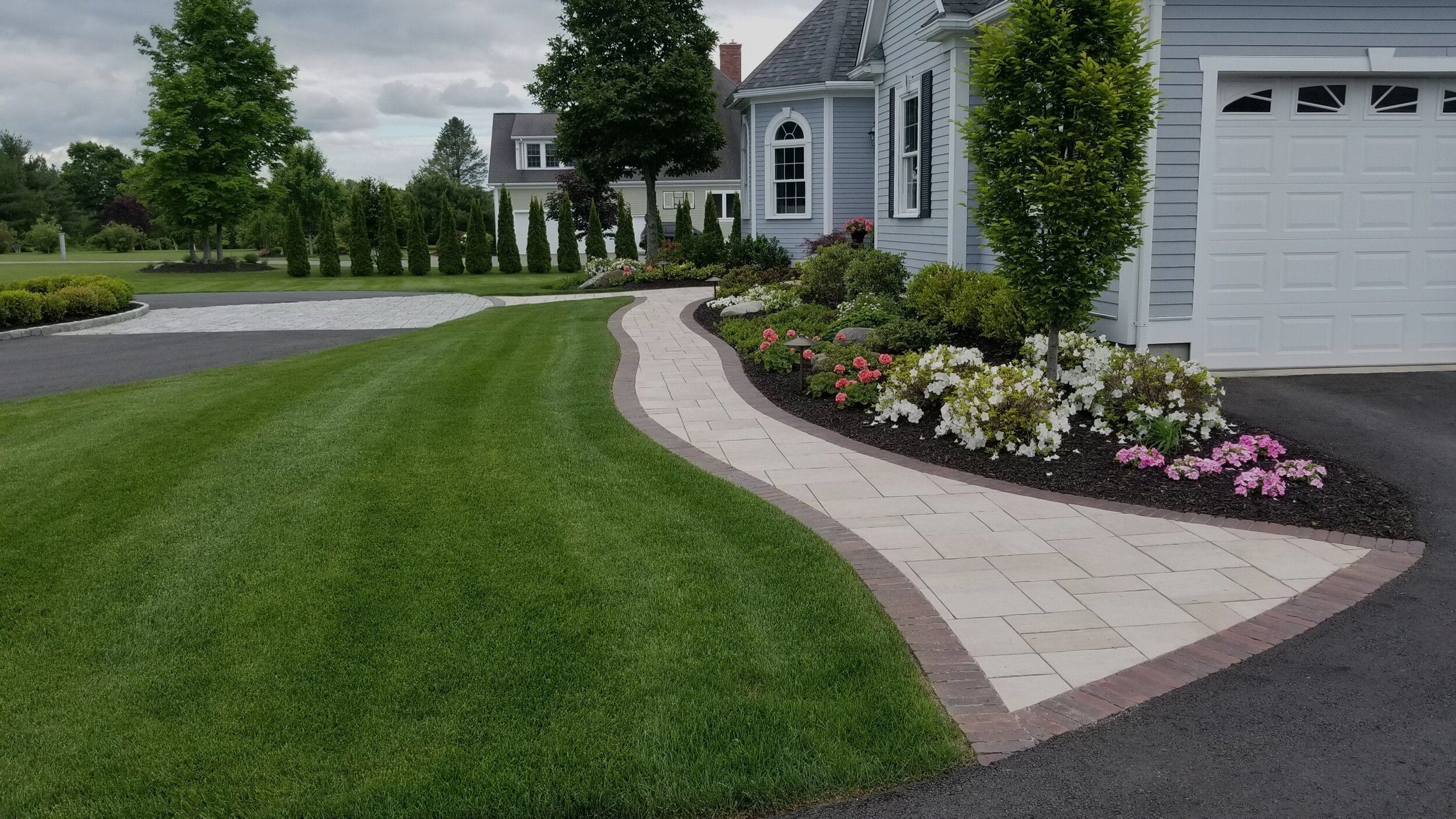A Comprehensive Overview to Creating and Implementing Effective Landscaping Solutions
The art and science of landscaping extend past plain visual appeals; they involve a thoughtful assimilation of layout principles, environmental stewardship, and practical application. A detailed guide to effective landscape design options begins with a comprehensive understanding of your exterior area, emphasizing the relevance of unity, proportion, and equilibrium. As we explore sustainable strategies and the choice of appropriate vegetation, the effects for biodiversity and area wellness become significantly apparent. What methods can one employ to make certain these landscapes not only prosper however additionally prosper attuned to their surroundings?

Recognizing Landscape Style Principles
One may question what fundamental aspects contribute to efficient landscape design. At its core, effective landscape style rests on a number of essential concepts that lead the plan and option of aspects within a space. These concepts include unity, rhythm, proportion, and balance, each serving to develop an unified outside environment.
Unity describes the cohesive connection amongst different parts, making sure that they collaborate cosmetically and functionally. Equilibrium can be achieved with unbalanced or balanced plans, permitting the landscape to feel steady and welcoming. Proportion includes recognizing the scale of aspects in connection with each other and the surrounding atmosphere, advertising visual harmony and comfort.

Analyzing Your Outdoor Space
Before applying the principles of landscape design, an extensive analysis of your outdoor space is crucial. This initial assessment assists specify the extent of your landscape design project and guarantees that your style straightens with the unique qualities of your property. Begin by assessing the measurements of your room, taking accurate dimensions to understand the readily available location for various components such as patios, pathways, and yards.
Following, observe the existing functions of your landscape, including topography, dirt top quality, and drainage patterns. These factors substantially affect plant choice and placement. Additionally, evaluate the sunlight direct exposure throughout various areas throughout the day, as this will impact the types of plants that flourish in your garden.
Consider the microclimates created by frameworks, trees, and various other challenges, as they can affect temperature and dampness degrees. Finally, bear in mind of any type of existing plants or hardscape aspects that you wish to remove or keep. This comprehensive analysis lays the foundation for a educated and efficient landscaping solution, ensuring that your layout is not only cosmetically pleasing however sustainable and also practical for years ahead.
Sustainable Landscape Design Methods
These techniques not just promote environmental equilibrium but likewise boost visit this site the aesthetic and functional value of a landscape. Executing effective watering systems, such as drip watering, minimizes water waste and ensures that plants get ample moisture (Palm Desert Landscaping).

An additional effective method is the strategic placement of trees and bushes to offer all-natural windbreaks and color, thus reducing power costs (Palm Desert Landscaping). Rain yards can be incorporated into the landscape design to handle stormwater drainage effectively, filtering contaminants prior to they get in waterways
Choosing the Right Plants
Choosing the right plants for your landscape is essential to attaining both visual charm and eco-friendly consistency. The procedure starts with an understanding of your local climate, soil conditions, and the details microenvironments within your landscape. Examining aspects such as sunshine direct exposure, dampness degrees, and existing vegetations will certainly aid you pick plants that thrive in your distinct setting.
Think about integrating native plants, as they are well-adapted to regional problems, need much less upkeep, and support regional wildlife. Additionally, selecting a diverse array of species can boost biodiversity while reducing the threat of condition and bug break outs. It is vital to evaluate the development behaviors, growing durations, and seasonal colors of potential plants to create a dynamic and cohesive landscape.
Furthermore, think of the meant use the space; as an example, if the location will experience high foot traffic, go with resistant ground covers. By attentively choosing plants that line up with both your ecological demands and aesthetic objectives, you look at here can develop a sustainable landscape that not just boosts your property however additionally contributes favorably to the surrounding environment.

Application and Upkeep Strategies
When the appropriate plants have been chosen for your landscape, the focus shifts to efficient execution and recurring upkeep techniques. Successful installment starts with proper site preparation, which consists of dirt screening to determine nutrient levels and pH, complied with by changing the dirt as required. Thoroughly prepare plants according to their development habits and light demands, making sure appropriate spacing to advertise healthy and balanced development.
Irrigation is a vital aspect of execution. Develop a watering timetable that considers the details requirements of each plant varieties, changing for seasonal modifications. Making use of drip watering systems can boost water performance and lower drainage.
Upkeep approaches have to be applied to make certain the long life and vigor of your landscape. Routine tasks include weeding, mulching, and pruning to manage growth and prevent disease. Fertilizing needs to be performed based upon soil tests, giving the essential nutrients without over-fertilizing.
Monitoring for pests and conditions is crucial; early discovery can stop substantial damages. Seasonal adjustments to maintenance routines, such as winterizing perennials and preparing for springtime growth, will certainly make sure that your landscape remains visually enticing and healthy year-round.
Verdict
Effective implementation and ongoing maintenance additionally make sure the durability check my reference and vigor of landscapes. By incorporating these elements, landscapes can be transformed into lovely, useful settings that promote biodiversity and contribute positively to community well-being.
One may wonder what fundamental aspects add to reliable landscape design. At its core, successful landscape design hinges on several essential principles that assist the plan and choice of aspects within an area.Choosing the right plants for your landscape is vital to achieving both aesthetic allure and ecological harmony. It is essential to evaluate the growth practices, flowering periods, and seasonal colors of prospective plants to create a vibrant and natural landscape.
When the ideal plants have been chosen for your landscape, the focus changes to reliable execution and continuous maintenance techniques.